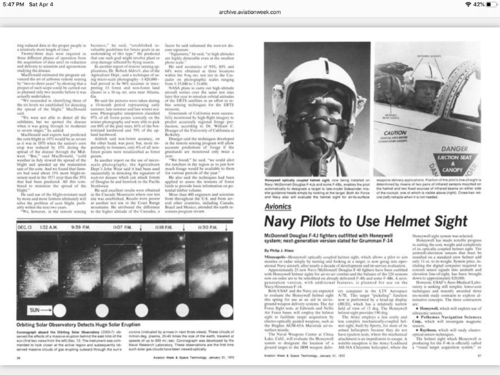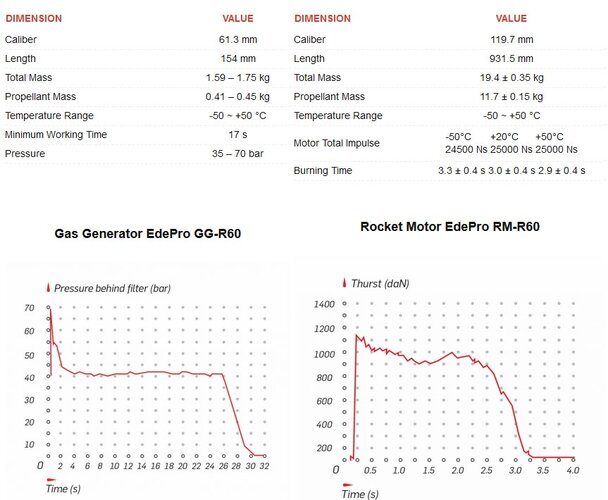Navy Spurs Industry Missile Role Service plans to bring contractors into development projects at earlier stage;
Agile program example of new approach
By Clarence A. Robinson, Jr.
Washington—Navy expects to bring industry experience into missile development programs earlier than it previously has with contractors playing a greater role in advanced development. But technology management of missile programs is likely to remain flexible within the Navy, depending on the type of guidance and propulsion employed with a specific weapon.
In general, the Naval Weapons Center, China Lake, Calif., will assume more responsibility in managing technical development. The Navy/Hughes Agile AIM-95 air-to-air dogfight missile development program is an example. Baseline configuration of the thrust-vector-controlled Agile, to be used in feasibility demonstration tests, is scheduled for determination in a May 9 program review by the Defense Dept.
The Navy is developing Agile under a new service-contractor team concept that brings industry into the program in the early stages of development. The concept is expected by the Navy to have a major impact on reducing the weapon’s cost in production.
Working with the Navy while Agile is still in advanced development will provide Hughes with transitioning experience that translates later into production expertise. Instead of turning the program over to a contractor selected during engineering development, the Navy will gradually phase the contractor into taking over the program lead during engineering development.
The point at which technical expertise is transferred from the naval laboratory to the contractor is critical to weapons development, and Navy officials expect to bring industry in early in program development. The reasons the contractor is being brought into advanced development of the Agile missile are to take advantage of Hughes’ production experience early enough to prevent costly changes in production and because of the company’s guidance expertise.
Contracting authority will remain at China Lake through Agile prototyping, with the project management office in Naval Air Systems Command here reviewing all facets of development prior to the issuing of requests for proposal to industry.
Hughes will assume authority for Agile late in engineering development, Navy officials said, but it is not certain what relationship Hughes will have with the propellant contractor, Thiokol. The motor may be procured directly from Thiokol and furnished by the Navy to Hughes. The integration authority for Hughes has not been decided, but it is likely Hughes will have that responsibility, Navy officials added.
Navy and Defense officials cite development of the McDonnell Douglas Harpoon anti-ship missile as an example of a well-managed missile program. They said there are similarities between Harpoon and Agile in management techniques.
The basic difference in the two programs, however, is the role played by the China Lake facility, although the Naval Weapons Center is beginning to play an increased role in the Harpoon program now that it is in the later stages of development.
Navy officials said the reason China Lake’s role in technical management has not been the same for Harpoon as for Agile is that the facility has little past experience in developing radar-guided weapons like Harpoon.
A number of missile systems have been totally developed by the weapons center, and the amount of contractor services varies from program to program—from almost none to extensive work with a contractor. Sidewinder, Walleye and Shrike are examples of laboratory development at China Lake with participation later by industry.
[stuff about Harpoon snipped]
Hughes is participating with Naval Air Systems Command and the technical manager at China Lake in identifying tradeoffs with Agile that will ultimately determine the missile’s design. Agile development began at China Lake in the late 1960s so it was natural that the center would manage the program technically, Navy officials said.
China Lake prepares a one-year plan for Agile development, which is detailed and includes test objectives and funding.
[More Harpoon stuff snipped]
Hughes now is working on the final guidance system configuration for Agile, based on the Navy’s conceptual design of the seeker. The missile is designed to make sharp, high-g turns and has a greater seeker tracking angle than present missiles. It is designed to allow Navy aircraft a first shot capability in aerial combat.
Thiokol Corp. is developing the propulsion system for Agile under a contract with the Navy, and the company is likely to continue under separate contracts with the service rather than becoming a subcontractor for Hughes. Thiokol now has a $2.8-million contract for propulsion development. Hughes is operating now under a $5—million contract and expects additional research and development contracts totaling approximately $50 million.
The Navy also has developed a winged version of Agile as a low-level effort backup system and for technology development. But officials emphasized that no problems have been encountered with the Wingless thrust-vector-controlled version of the missile.
The Agile system permits pilots to shoot at targets out of the direct line of sight, since the missile’s thrust vector control is designed for launch against targets off the longitudinal axis of the launch platform. Other options, including mechanical controls, also are being studied, but the thrust—vector system is the leading candidate for fighter-to-fighter engagements.
Agile suitability for use on attack aircraft, as well, is being examined, and early results indicate that it possesses a significant capability as a self-protection weapon for close-air-support aircraft. This could permit attack aircraft to defend themselves without having to jettison their bomb load and abort the primary mission. Use of Agile on attack aircraft could permit elimination or reduction of combat air patrols now required to protect attack aircraft against a fighter threat.
Navy officials are involved in extensive analysis of data gathered from simulated flights with the missile, from ground propulsion tests of the weapon’s thrust-vector controls and mock combat air maneuvering.
Flight Tests
The Defense Dept. has delayed moving the missile into engineering development until after hardware prototypes, which are nearly completed, can be flight tested to better define the requirement. The service is seeking to optimize the data already gathered to establish combat maneuvering parameters for the missile. This will influence the final configuration and cost performance trade-offs as development
continues.
Simulator tests have been conducted-in the LTV Aerospace air combat maneuvering simulator in Dallas. In ground maneuvers at the Naval Weapons Center at China Lake, Calif., the missile has been programed to perform various combat maneuvers to test aerodynamics during propulsion.
Two Navy operational test and evaluation squadrons—one attack squadron, VX-5, at China Lake, and a fighter squadron, VX-4, at Pt. Mugu—are seeking to determine the tactics and missile characteristics early in the development cycle for comparison with other data already gathered from the various sources.
The service plans to conduct an initial operational test and evaluation of the missile early in the development program. Captive flights with the missile’s seeker are scheduled in a variety of combat maneuvering scenarios with a Navy McDonnell Douglas F-4J to ascertain how much aircraft maneuvering is required when launching the dogfight missile against targets. These tests will determine some design-to-cost tradeoffs.
The missile has been fired over 1.5 million times in flight simulation and a computer has been used to determine trajectory with thrust vector control.
Data from mock aerial combat have been quantified by the Navy to design the Agile missile. This effort was aimed at improving the capability of an aircraft armed with Agile to get off the first shot, Navy officials said.
In the aerial maneuvering, results were summarized for the F-4 against a simulated Soviet MiG-21. The data show the missile’s off-boresight seeker coverage is influential in the mean time from beginning of a dogfight for the friendly aircraft to launch the first missile.
The data include fights typical of projected aerial combat in the enemy airspace starting with the MiG at the nose, beam and tail of the F-4 in equal distribution. The F-4 was at a disadvantage two thirds of the time, Navy officials said. But the time into the dogfight for the first firing opportunity decreases with an increase in the seeker’s off-boresight capability. The program review for Agile scheduled for May is to determine the performance capability required for the missile and to narrow selection of missile subsystems, as well as the final feasibility design for Agile.
Later, Navy officials said, Agile hardware, subsystems and detail engineering will be selected with a look at each option for design-to-cost alternatives. The Navy gained approval for $18 million in Fiscal 1974 and is requesting $20 million for development in Fiscal 1975. The service expects a Defense Systems Acquisition Review Council decision on engineering development in Fiscal 1976.
Other Seekers
In addition to the infrared seeker for the dogfight role,
Agile also has been tested with an electro-optical system, and the
Navy has long-range plans to test a radio frequency seeker for use of the missile in the defense suppression role.
A new warhead, using annular blast fragmentation, is in development at China Lake for use with the Agile Missile. The warhead concept is not peculiar to the missile, but greatly improves lethality. The thrust vector nozzle is mounted aft in the Agile on a gimbal. The propellant package is located forward in the missile and the exhaust is ducted through the missile’s body to the nozzle. The nozzle is hydraulically controlled and is pointed for missile trajectory. Fins are mounted just forward of the nozzle on a body ring and serve to stabilize the weapon at launch. Once the missile is up to speed, the fins are not required for control.
The Agile weighs slightly more than the AIM-9L Sidewinder missile, which is also in development, but the Navy has a weight reduction project in progress as part of the program.
Agile is being evaluated for cost effectiveness in four versions:
- Thrust-vector-controlled version to offer the best performance technology will allow.
- Performance-limited version that makes large compromises to reduce cost.
- Trade-off version that makes the most cost-effective approach.
- Aerodynamic-controlled version that meets most of the performance goals, but which has some technological risk and less growth potential.
After advanced development, the Navy plans full-scale development in three phases:
- Engineering development. About 30 missiles are planned.
- Prototype phase. About 70 missiles will be built for demonstration, initial operational evaluation and technical evaluation.
- Pilot production. Approximately 100 units will be manufactured using production funds for operational evaluation and aircraft system tests.
Thrust-vector-controlled configuration of Navy's AIM-95 Agile air-to-air missile is fired from a test stand at China Lake, Calif. in a programed launch with the missile flying a given trajectory for investigation of aerodynamics and controls during maneuvering.
Six programed launches have been conducted with this version of Agile. The warhead space is not employed for that purpose during the tests.
























